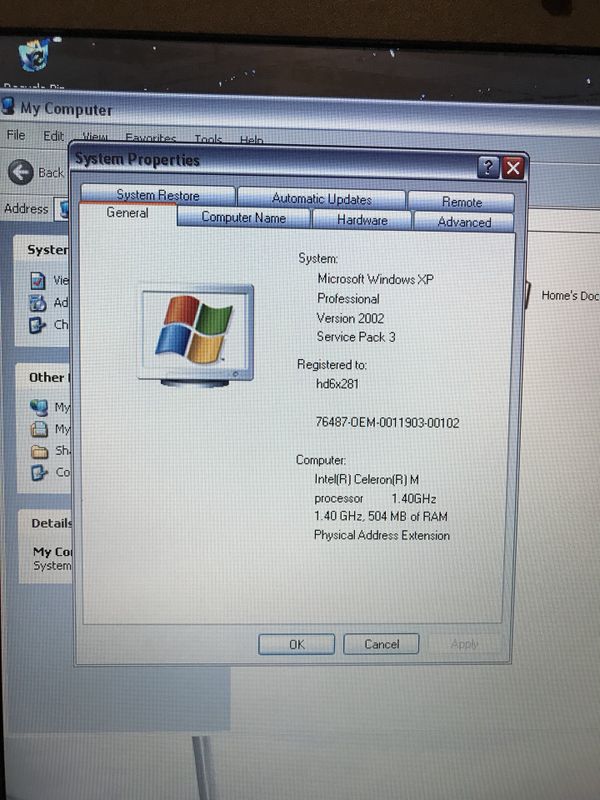76487 Oem 0011903 00102

.76487-OEM-003 I CAN record to external hard drive and to memory stick but not to CD or DVD is there a reason for this Yours M J FAY You will need a program like Nero to create a temp cd/dvd. The license associated with the Belarc Advisor product allows for free personal use only.Use on multiple computers in a corporate, educational, military or government installation is prohibited.
With these instructions you can change your Windows XP installation media to allow OEM, Retail, or Volume License product keys. Unlocking WinXP’s setupp.ini WinXP’s setupp.ini controls how the CD acts. IE is it an OEM version or retail? First, find your setupp.ini file in the i386 directory on your WinXP CD. Battlefield online download.

Open it up, it’ll look something like this: ExtraData=736F696F697911AE7E05 Pid=55034000 The Pid value is what we’re interested in. What’s there now looks like a standard default. There are special numbers that determine if it’s a retail, oem, or volume license edition. First, we break down that number into two parts. The first five digits determines how the CD will behave, ie is it a retail cd that lets you clean install or upgrade, or an oem cd that only lets you perform a clean install? The last three digits determines what CD key it will accept.
You are able to mix and match these values. For example you could make a WinXP cd that acted like a retail cd, yet accepted OEM keys. Now, for the actual values. Remember the first and last values are interchangable, but usually you’d keep them as a pair: Retail = 51882335 Volume License = 51883 270 OEM = 82503 OEM So if you wanted a retail CD that took retail keys, the last line of your setupp.ini file would read: Pid=51882335 And if you wanted a retail CD that took OEM keys, you’d use: Pid=51882OEM Note that this does NOT get rid of WinXP’s activation. Changing the Pid to a Volume License will not bypass activation.
You must have a volume license (corporate) key to do so. A Windows product ID [currently, as of the XP Home/Pro/Server 2003 era] has the following format: xxxxx-yyy-zzzzzzz-zzzzz xxxxx-yyy-zzzzzzz-zzzzz The ‘xxxxx’ component The xxxxx section, which I will now call the “OS type”, from what I understand, determines the flavor of Windows version. Here is my current list of OS type IDs: 55274: XP Professional (Corporate/Academic) 55285: XP Professional* 55276: XP Home (?)** 55277: XP Home 51873: 2000 Professional 76487: Media Center Edition 2005 (or XP Professional Royalty OEM***) 76477: XP Home (Royalty OEM***) The current OS ID can be gotten by various methods: * If the destination computer’s operating system works well enough [even in safe mode], you can get it by right-clicking My Computer, clicking Properties, and reading the long ID number that appears under ‘Registered to’. * You can use the command reg query “hklmsoftwaremicrosoftwindows ntcurrentversion” /v ProductID if you’re at a command prompt (CMD.EXE). * If the destination computer does not work very well, you can get it by attaching the hard drive to a working machine, and mount the hive by highlighting HKEY_LOCAL_MACHINE in regedit, and choosing File; Load Hive. Then you can surf your way to the machine’s system32configSOFTWARE hive. It will ask you what key to mount; you then give it any name you like, and it will appear under your own HKLM.